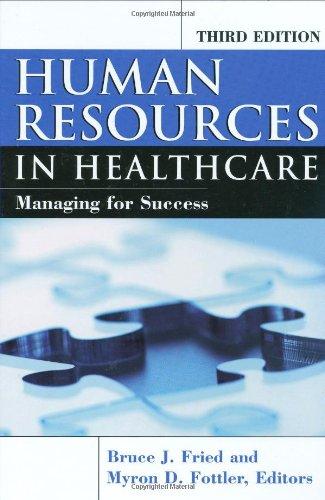Summit River Nursing Home (SRNH) is a 60-bed nursing home that serves a suburban community in the
Question:
Summit River Nursing Home (SRNH) is a 60-bed nursing home that serves a suburban community in the Midwest. The facility provides a broad range of services to residents, including recreational activities, clinical laboratory, dental services, dietary and housekeeping services, mental health and nursing services, occupational and physical therapies, pharmacy services, social services, and diagnostic x-ray services.
The facility has a good reputation in the community and is well staffed. Licensed practical nurses administer medications and perform certain treatment procedures. Each nursing home resident receives at least two hours of direct nursing care every day. Certified nursing assistants perform most of the direct patient care. A dietary service supervisor manages the daily operations of the food service department along with a registered dietitian. Activity coordinators provide nonmedical care designed to improve cognitive and physical capabilities. Two social workers on staff work with residents, families, and other organizations, and an important part of their role is to ease residents and their families’
adjustment to the long-term-care environment.
They also help to identify residents’
specific medical and emotional needs and provide support and referral services.
Environmental service workers maintain the facility with a goal of providing a clean and safe facility for the residents. Housekeeping staff also have considerable contact with residents on a day-to-day basis. SRNH has contractual relationships with a dental practice, physical therapists, a pharmacist, a psychologist, and a multispecialty physician practice.
The management team at SRNH consists of an administrator, a finance director, a human resources director, a director of nursing, and administrative support personnel.
Recently, concerns about quality have emerged at the nursing home. Several instances of communication breakdown among staff have occurred, and several instances of medication error have also taken place. A resident satisfaction survey also revealed problems, of which management had been unaware. Some of the problems concern contract staff who have not been included in the organization’s performance management process.
After discussions with management and employees, it was established that a team atmosphere among staff was lacking. Each member of the management team was asked to develop a strategy to improve the level of teamwork in the facility. The human resources director agreed to take action in three areas:
1. Ensure that all job descriptions addressed teamwork and that these changes are discussed with employees.
2. Develop and implement a team-building training program for all employees, including contract staff.
3. Revise the performance management approach so that it focuses on teamwork as well as individual skills and accomplishments.
The first two strategies were relatively easy to complete. Job descriptions were revised, and supervisors met with employees to discuss these changes. With the assistance of an outside consultant, a training program was implemented to teach employees communication and conflict management skills.
Several, but not all, contract employees attended the training program. The third strategy raised some difficulties.
The current performance management system is traditional, using a 12-item graphic rating scale (some with behavioral descriptions) that measures aspects of work such as attitude, quality of performance, productivity, attention to detail, job knowledge, reliability, and availability. The form also provides room for comments by both supervisors and employees. This rating approach, however, was found to be incapable of addressing the team components of the jobs.
An additional problem is that several staff members are on contract and are not fully integrated into the organization. These staff members currently do not go through the organization’s performance management process.
Case Exercise
You are a consultant to the human resources director. Your job is to develop a method by which teamwork may be assessed in the performance management process.
1. How would you proceed with the task of modifying the performance management process?
2. What specific strategies do you think should be considered?
3. What obstacles do you see in implementing your approach? How would you overcome these problems?
Step by Step Answer:

Human Resources In Healthcare Managing For Success
ISBN: 9781567932997
3rd Edition
Authors: Bruce Fried, Myron D. Fottler





